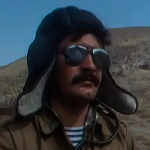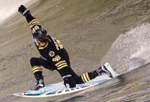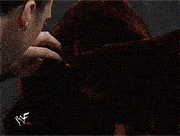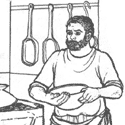|
Has there been any great change in the historiography of Japanís pilot and air group replacement program? Itís still a key determinator in Japan losing in World War 2, right? My source is primarily Mark R. Peattie (2001) Sunburst: The Rise of Japanese Naval Air Power, 1909-1941, so something might have changed since the turn of the century.
|
|
|
|

|
| # ? May 21, 2024 19:58 |
|
Urcinius posted:Has there been any great change in the historiography of Japanís pilot and air group replacement program? Itís still a key determinator in Japan losing in World War 2, right? http://www.combinedfleet.com/economic.htm I am sure that stuff didn't help but they would have been doomed even if they had no issue regarding replacing pilots.
|
|
|
|
Was there actually fears about Japanese invasion of the US mainland by the military/government? It seems that considering the huge logistics train required the best the Japanese would be able to do is a garrison force on Hawaii and maybe a bunch of dudes in Alaska.
|
|
|
|
Defenestrategy posted:Was there actually fears about Japanese invasion of the US mainland by the military/government? It seems that considering the huge logistics train required the best the Japanese would be able to do is a garrison force on Hawaii and maybe a bunch of dudes in Alaska. I think that there were more fears about strikes on the mainland (air, commando insertion from subs, shelling via subs) than about a real invasion. Invasion was played up for home front morale / propaganda purposes but quick math on what it would take to just hold on to Hawaii would dispel any notion pretty quickly. Weíre talking a few divisions plus air assets ashore, and resupply would require a lot of sealift that Japan realistically could not meet.
|
|
|
|
Are there any good books about how battles were actually fought throughout various periods. Not wars or logistics as such but the nitty gritty of, how did a medieval general tell his knights to charge over there instead of over there? How did the union rifle company waiting for their orders to ambush an enemy unit know and execute said orders? How does a tank commander in WW2 know when he's winning and when he's losing? Similarly, are there any books about the nitty gritty operations of ships during the age of sail? There's lots of famous captains and admirals, whose famous battles can be read about. But there must have been a lot lf busy work in between those battles.
|
|
|
Defenestrategy posted:Was there actually fears about Japanese invasion of the US mainland by the military/government? It seems that considering the huge logistics train required the best the Japanese would be able to do is a garrison force on Hawaii and maybe a bunch of dudes in Alaska. The federal government and military brass weren't particularly worried about it at all but the state governments of Washington and Oregon made a lot of noise about being afraid of an invasion down through Alaska/Canada once it was known that Japan took a couple of the Aleutian islands. The military chose to not address their fears (at least publicly) because they didn't want Japan to know that they considered the Aleutians a non-threat and weren't worried about an invasion through them. This is all according to Ian Toll's pacific war trilogy.
|
|
|
|
|
OscarDiggs posted:Similarly, are there any books about the nitty gritty operations of ships during the age of sail? There's lots of famous captains and admirals, whose famous battles can be read about. But there must have been a lot lf busy work in between those battles. I'll suggest The Line Upon the Wind by Mostert for age of sail stuff. It's a fat volume covering the history of the period, how ships worked, and enough detail to know why battles went the way they did. https://www.amazon.com/Line-Upon-Wind-1793-1815-1763-1815-ebook/dp/B002AU7MVI
|
|
|
|
D-Pad posted:The federal government and military brass weren't particularly worried about it at all but the state governments of Washington and Oregon made a lot of noise about being afraid of an invasion down through Alaska/Canada once it was known that Japan took a couple of the Aleutian islands. The military chose to not address their fears (at least publicly) because they didn't want Japan to know that they considered the Aleutians a non-threat and weren't worried about an invasion through them. This is all according to Ian Toll's pacific war trilogy. Well there was a lot of hubub about the the Aleutians even ultimately the action there was fairly minor in the grand scheme of the war. There were a lot of worries, and as part of that, a lot of the locals were placed in internment camps to 'protect' them from the war, and I think those camps had worse conditions and lasted for longer after the war than the japanese internment camps in the contiguous US. Much less people know about it because suppression of the media in Alaska was a lot more aggressive. They also were featured in one of the Snafu films. https://www.youtube.com/watch?v=-2ODyo96FSQ
|
|
|
|
Vincent Van Goatse posted:That doesn't make sense. It was Nicky II who was Tsar when Finland gained independence. It's probably not well known, hell, I only know because I listened to an excruciatingly detailed podcast about the Russian Revolution once, but the Russians gave the Fins some minor self-governing autonomy at some point. I'm guessing that is where that foreword comes from. By the time of Tsar Alexander III, Finland had been a Russian Grand Dukedom for nearly a century. Apparently, this all goes back to our good old friend, the French-Defeater and Napoleon-Basher, Alexander I. He really liked Finland.
|
|
|
|
I just want to clarify that when Finland declared independence, the Tsar had been deposed last winter and the interim government too had been deposed by Lenin. The oldest bits of legislation still in effect in some part in Finland come from 1734 when this was still Sweden. An example that is still in our code: quote:Every house must have a hop garden, and every year the peasant must plant good roots for forty hop poles, until there are two hundred in the whole house. He who does not do this shall be fined one thaler for each year, and shall plant as has been said, unless it is found that a hop-plant cannot be planted or kept there.
|
|
|
|
OscarDiggs posted:Are there any good books about how battles were actually fought throughout various periods. It's pretty long in the tooth by now, but it sounds like you still want The Face of Battle by Keegan. I'm not sure if it has all the details of command that you're looking for, but it basically is about breaking down the individual soldier experiences at Agincourt, Waterloo, and the Somme by comparison.
|
|
|
|
Nenonen posted:I just want to clarify that when Finland declared independence, the Tsar had been deposed last winter and the interim government too had been deposed by Lenin. If I'm reading this correctly, they were mandating that every house grow beer ingredients?
|
|
|
|
For the details of how command worked historically, I think Martin Van Creveld's Command in War is the book. Creveld definitely gets weirder and crankier in his later years, but I'll let the actual historians in this thread say whether or not he made lapses in his earlier work.
|
|
|
Defenestrategy posted:Was there actually fears about Japanese invasion of the US mainland by the military/government? It seems that considering the huge logistics train required the best the Japanese would be able to do is a garrison force on Hawaii and maybe a bunch of dudes in Alaska. First off, whenever you look at something in the past and think it is "obvious", remember that the people in question don't know a tenth of what you know about it. That matters in things historical. Also remember that by all the estimates that it was logistically impossible for the Japanese to leapfrog from Alaska down to Oregon or California, it was logistically improbable for them to strike Pearl Harbor and take Wake, Midway, and the Philippines from the US. When you've provably been drastically underestimating a potential enemy for years, overestimating them now that they're a confirmed enemy is only natural.
|
|
|
|
|
TooMuchAbstraction posted:If I'm reading this correctly, they were mandating that every house grow beer ingredients? Yep, Swedish army ran on hop juice.
|
|
|
|
Gnoman posted:First off, whenever you look at something in the past and think it is "obvious", remember that the people in question don't know a tenth of what you know about it. That matters in things historical. That's why I was asking if there where sources from US Headquarters/The President/The Congress going "Man we need to keep X amount of divisions state and y amount of ships on shore patrol to deal with a theoretical invasion of California." or if they didn't really factor needing to keep dudes in America for the specific purpose of defending against invasion.
|
|
|
|
Nenonen posted:Yep, Swedish army ran on hop juice. Is that a real thing written down somewhere? You have to plant these so we can forage them off you if needed?
|
|
|
|
Defenestrategy posted:That's why I was asking if there where sources from US Headquarters/The President/The Congress going "Man we need to keep X amount of divisions state and y amount of ships on shore patrol to deal with a theoretical invasion of California." or if they didn't really factor needing to keep dudes in America for the specific purpose of defending against invasion. There's a book about defending Hawaii I read years ago that might give some leads. I forget the title but it's somewhere on my bookshelf. EDIT: Found it! Brian McAllister Linn, Guardians of Empire: The U.S. Army and the Pacific, 1920-1940. Vincent Van Goatse fucked around with this message at 02:41 on Apr 7, 2024 |
|
|
|
D-Pad posted:The federal government and military brass weren't particularly worried about it at all but the state governments of Washington and Oregon made a lot of noise about being afraid of an invasion down through Alaska/Canada once it was known that Japan took a couple of the Aleutian islands. The military chose to not address their fears (at least publicly) because they didn't want Japan to know that they considered the Aleutians a non-threat and weren't worried about an invasion through them. This is all according to Ian Toll's pacific war trilogy. In Oregon a bunch of local yokels decided to form militias to start patrolling roads and such to keep out foreign infiltrators and the governor realized that this was going to be a terrible idea and wanted a federal presence to help give the impression that there was actually some sort of defense in the state to help calm things down. Eventually I think the governor told all the locals they were 'official state militias, don't call us we'll call you when we need you' and things calmed down.
|
|
|
|
OscarDiggs posted:Are there any good books about how battles were actually fought throughout various periods. Not a book, but ACOUP has a good series of blog posts about ancient generalship in the pre-modern world. The basic premise is pointing out how the way things are much different than in a RTS game or a movie. https://acoup.blog/2022/05/27/collections-total-generalship-commanding-pre-modern-armies-part-i-reports/
|
|
|
|
OscarDiggs posted:Are there any good books about how battles were actually fought throughout various periods. I'll happily point you to the work of Brent Nosworthy for exploration of how musket warfare was conducted.
|
|
|
|
I suspect that this post will be the jumping-off point for a series of effort-posts, because I've recently fallen down a very specific rabbit-hole. In reading around a quite different subject, I came across a passing reference to "The Affair at Moerbeke", which apparently occurred during the retreat of the Royal Naval Division from Antwerp in the opening weeks of WW1. That led to me tracking down some issues of Leonard Sellers' multi-part magazine 'R.N.D' from the late 1990s, which brought together loads of primary sources about the life and times of the Division (I have since found out that it's readily available online on the Western Front Association's website. R.N.D. Issue 10 served up a reproduction of the original military court of enquiry into the Affair. Then I found myself reading around the narrative to explain why certain people were (or weren't) in certain places, and then I found myself on Google Earth drawing arrows on maps of Belgium to clarify exactly where and when the movements people were describing took place. And before I knew it what was actually quite a minor part of a minor part of one phase of the war had blossomed into a stack of info worth sharing here. The full context has to begin at the beginning, so let's start with: The Royal Naval Division In the early weeks of the war the Admiralty found itself with a surplus of men once the Grand Fleet had been fully mobilised. This surplus consisted primarily of fresh intake who had swarmed the recruitment offices in the first days of the conflict and men of the Royal Naval Volunteer Reserve (RNVR). The RNVR had only been formed in 1903 with the purpose of providing naval training to civilians (as opposed to the older Royal Naval Reserve, which only took men already working at sea in the merchant or fishing fleets). Some of the RNVR divisions around the British coast were only a few years old, and the on-book strength of the organisation - about 4000 - belied the fact that few of these men had time for anything other than the most basic military training and even fewer had any useful experience at sea in the fleet. Winston Churchill, as First Lord of the Admiralty, had already conceived the idea of what was called the 'Advanced Base Force', which would be a light infantry and field artillery brigade of Royal Marines for capturing and/or defending naval bases and key supply harbours. With naval barracks filling with new recruits and under-trained reservists, the idea was expanded to become an entire division of naval light infantry that could be committed to the inevitable full-scale land war alongside the British Expeditionary Force. The Royal Naval Division would consist of three brigades, each of four battalions. The 1st and 2nd Brigades were naval, being formed primarily of men from the RNVR, bolstered by fresh recruits and topped off by a core cadre of senior ratings and officers from the Royal Naval Reserve and the Fleet Reserve (men who had served out their term in the Royal Navy and then been retained on inactive duty, to be recalled in the event of war). Each battalion was named after a famous admiral from Royal Naval history: the 1st Brigade had Drake, Benbow, Hawke and Collingwood battalions, while the 2nd Brigade had Nelson, Howe, Hood and Anson. The 3rd Brigade was of Royal Marine Light Infantry, with each battalion being drawn from, and named for, one of the main RM barracks - Chatham, Portsmouth, Plymouth and Deal. Full strength for the Division was just shy of 8000 men. As originally formed the Admiralty did not have enough surplus bodies to fill all the battalions of both naval brigades, but the gaps were filled by surplus recruits from Army regiments from the north-east of England, thus providing the RND with a useful number of very fit, strong and willing men from the coal fields of Yorkshire and Durham, albeit they were, like virtually all their new shipmates (the RND was, from the start, particular about using naval terminology), wholly untrained.  And early recruiting poster for the Royal Naval Division demonstrated the hope and theory for what the unit was to be. The reality would prove very different - to many of the men, shockingly so. The RND was officially formed on August 16, 1914. The two naval brigades required time to be formed, equipped and receive even a modicum of training. This was done at the newly commandeered Crystal Palace in London (officially named 'HMS Victory II') where the new recruits were put through an accelerated five-week course of basic military and infantry training. Promotion and advancement could be quick - almost instantaneous. Fresh recruits who showed promise could find themselves pinning on the fouled anchor badge of a Leading Hand straight out of initial training, while others found themselves elevated to the commissioned ranks. Men from public schools, universities and the professions were made Temporary Sub-Lieutenants, RNVR the moment they signed up. Equipment was drawn predominantly from existing naval stores and was therefore both basic and certainly not cutting edge. The standard rifle of the RND was the old 'long' Charger-Loading Lee-Enfield, rather than the Army's famous Short Magazine Lee-Enfield. Ammunition was in good supply, but webbing and ammunition pouches were not, so most men ended up carrying loose rounds in their jacket pockets. Similarly while each rifle had a bayonet, scabbards were rare and so tended to be tucked into gaiters while on the march. Machine guns were on order but not expected any time soon. Medical support consisted of naval surgeons attached to each company and their standard field supplies. Field artillery was not even planned. Uniforms were a mixed bag. Ratings wore the standard blue 'sailor suit', complete with bell-bottom trousers, square flap collar and flat-topped cap, but with the bell-bottoms tucked into gaiters and Marine-pattern boots and the collar emerging from a khaki jacket. Officers were supposed to wear Army-pattern khaki service dress but with naval-style rank insignia on the sleeves and a bronze version of the naval cap badge. However these items were in short supply and so a good portion went into action wearing the standard navy blue double-breasted reefer jacket with gold lace braid. Some men, with more enterprising or less informed tailors, found themselves in a version of the reefer jacket cut from Army khaki. The senior petty officers and chiefs of the RND were apparently initially overlooked and nearly all wore their ordinary 'fore and aft' rig with blue jacket and trousers, matched incongruously with gaiters and webbing. Off to Belgium The Marine Brigade, already in a much higher state of preparedness and training and fully equipped from its own resources, was sent to Belgium in late August to assist with the defence of Ostend, later being moved up to protect Antwerp as the Germans approached from the east and south, having smashed through the Belgian fortifications at Namur with the devastating Skoda and Krupp siege howitzers and then launched 60,000 soldiers at the Belgian trenches. Antwerp was also the intended location of the naval brigades' first active use, but their deployment was to be held back to the last possible moment while training and equipment were still given out. Churchill visited Antwerp on October 2, just as the German bombardment of the outer ring of forts began. By the end of the next day the Marine Brigade had been brought up and sent into the trenches that had been hastily dug between the forts of the inner defence, just outside the city's medieval walls. Churchill left Antwerp just as the Marines were entering it, had a meeting with the Belgian Prime Minister and then sent messages ordering the naval brigades to be immediately sent to Antwerp via Dunkirk. In the name of speed they were to be sent without tents 'or other impedimenta' and to carry rations for five days and 250 rounds of ammunition per man. The timing of the move order was not the best; the men in the naval brigades were camped in the countryside outside Deal in Kent. They had just had two days of intensive field exercises and the evening before several companies of men had been given vaccinations against typhoid, which they had started to feel the reaction to as they turned in for the night. At 5am the men were unexpectedly roused with orders to be ready to move out at 9am. Despite widespread consensus that this was simply a poorly-timed exercise, the battalions began their march to Dover on time. Although ammunition was in short supply (averaging just half the ordered amount - 120 rounds per man) morale was very high. While ammuniton was scarce, orders about baggage had been over-generous. Most of the ratings had packed their entire kit bundles (wrapped up in a naval-issue hammock) while valuable space in the hard-pressed road wagons was taken up with officers' uniform trunks. No prepared food had been made available at Dover or Dunkirk, so by the time the men had mustered in dockside warehouses on the French side of the Channel they had gone 16 hours without a meal and had had to load and unload their own kit and equipment at each harbour. Only at 9pm that night, when the order to move to Antwerp came down, was the consensus that this was an exercise finally dispelled.  The journey of the Naval Brigades of the RND, 4th-6th October, 1914. March from Deal to Dover, take ships to Dunkirk, then trains to the west bank of the Scheldt, then march into Antwerp from the west. Antwerp The naval brigades met with a warm welcome as they marched into Antwerp, with crowds of Belgians pressing jugs of beer and coffee into the men's hands as they passed, while British and Belgian flags were waved and flowers thrown from windows. The Germans were forcing their attack on the inner defence line, and there could be no time for rest or nourishment. The RND's commanding officer, Major-General Archibald Paris, ordered the naval brigades straight into the trenches to relieve the hard-pressed Marine Brigade. The inexperience of the Division as a whole and the company officers in particular showed almost straight away, as the 1st and 2nd Naval Brigades tangled each other up in the narrow streets and crowded squares of the city as they tried to move to their assigned sectors, and then the 2nd Brigade inadvertantly found itself blocking the route of the Marines as they tried to draw back - a first impression which immediately soured the Marines' attitude to the 'Khaki Jacks' in the naval brigade. None the less, by the dawn of October 5 the RND was in place - the 1st Naval Brigade in the trenches between Forts 2 and 5, and the 2nd Brigade in the trenches between Forts 5 and 8. The Marine Brigade was in reserve, but almost immediately one of its battalions was ordered back into the trenches to support the right flank against the Scheldt.  Positions of the RND at Antwerp. Fort 8 is not shown on the original of this map, but I have added it in. The trenches between the forts had been hastily dug. They were simple, literal trenches without parapets or dugouts. Due to the high water table they were shallow - only providing true cover if men crouched and in some places were only two feet deep. There were no communications trenches leading back to the reserve areas, so all movements to and from the line had to be made across open ground. Ground 500 metres ahead of the line had been cleared and levelled, which provided good visibility for the defenders but also rendered both the open ground behind the line and the key forts clearly visible to German observers and artillery spotters. With no immediate action on the part of the Germans, the next day was spent getting food to the men, although this was mostly in the form of field rations which, being naval stores, were mostly ship's biscuit, bully beef, jam and tea. These rations were brought up to the line in commandeered London buses, which had been plucked straight from the capital's streets and incongrously still bore their London destination boards. Time was also put to use improving the trenches, with some dugouts and communication 'trenches' (more accurately ditches) being dug.  RND ratings in trenches at Antwerp, 7th October, 1914. The men are clearly in the process of, or have just finished, improving the simple ditch provided by the Belgians, with the addition of a shrapnel shelter and a forward firing position. Note the shallow depth of the trench and the lack of a parapet, firing step etc.  RND officers at Antwerp, demonstrating the varied uniforms taken to Belgium. The Sub-Lieutenant on the left is wearing a full set of official khaki - Army service dress with naval rank insignia on the cuffs and the equivalent Army 'pips' on the shoulder straps. The man in the middle is wearing the khaki essentials but with a civilian cardigan. On the right is a Naval Surgeon (hence the Red Cross armband and the cuff stripe without the 'executive curl') in full standard RN working rig, right down to the gumboots. The rating in the background is also free of khaki apart from his gaiters. In the early hours of October 8 the Belgians set fire to the oil refinery in the Antwerp docks to deny it to the Germans. The intense flickering firelight illuminating the western sky behind the lines and some overactive imaginations led to sudden reports of German patrols approaching the lines and before long both naval brigades were setting down enthusastic but erratic and innaccurate rifle fire that took nearly an hour to get stopped. Ironically, almost as soon as calm returned the reason for the lack of German activity was revealed; they had been relocating the fearsome seige howitzers which now began to shell the inner forts and the trenches. The Belgians, already too familiar with the effect of a 380kg Skoda shell on a concrete fort, retreated into the city. The naval brigades thinned out of the trenches to occupy the forts. Reports came that a large German force had crossed the Scheldt 20 miles to the south of the city and were swinging up to the north east, preparing to encircle the city and cut off any British retreat to the Channel. In Part 2: The RND sees a war for the first time. It doesn't go well.
|
|
|
|
OscarDiggs posted:Similarly, are there any books about the nitty gritty operations of ships during the age of sail? There's lots of famous captains and admirals, whose famous battles can be read about. But there must have been a lot lf busy work in between those battles. I'm not entirely sure if I'm reading you right here since I'm operating on maybe two or three hours of sleep in the last twenty-four hours (apologies if the following ends up a bit incoherent), but are you looking for a basic primer of what exactly a sailor might be doing and what a ship is actually doing at any given point when it's not fighting? If so, John Harland's "Seamanship in the Age of Sail" should probably be the first thing you look for, though I'd advise you to see if the local library has it instead of trying to buy it yourself because it's damned expensive. As a very quick summary, though, a ship that's sailing along basically has three tasks that need to be done - sailing the ship, maintaining the ship, and navigating the ship. Sailing the ship is more complicated than you might think even if you're just moving in a straight line - the wind changes, as does the tide, which means you're going to need to adjust the sails constantly to ensure you're getting the most of the wind. This mostly comes down to the deck crew hauling on lines on deck, with more skilled and experienced topmen going aloft onto the yards to furl or unfurl sails as necessary (that is, to put them away or to make them ready to be set) or to deal with any weird problems that might crop up aloft, while the officer of the watch stands in charge of it all. Maintaining the ship is a constant battle - the sea is constantly wearing away at everything, and the eternal battle of the ship is to try and keep things from wearing through and breaking. Planks rot and give way under the pressure of the sea, lines chafe up against the sails and each other and break, sun-bleached sails eventually stretch and rip under strong winds, the question on any given boat isn't whether anything will break, it's when. There is almost always SOMETHING that needs to be fixed at any given moment, and if you're wise you'd be conducting preventative maintenance to try and keep things from breaking too soon as well. Maintaining the boat is primarily a job for the idlers - that is, the people who don't stand night watches but work throughout the day and sleep at night instead (though in practice they actually tend to work longer hours). These mostly are the bosun (primarily responsible for the rigging, i.e. the lines and yards aloft), the sailmaker, the carpenter, possibly a ship's blacksmith, the gunner (got to keep the guns and gunpowder in good condition come the day of battle), the cook and the purser (maintaining the crew is an important part of maintaining the ship!) That being said, while these skilled specialists and their mates are in charge of directing what needs to get done, they're generally going to draw on the crew itself for any grunt work that's necessary, whether that means literally putting their muscle on something or acting as a factory line to mass-produce splices or something. Navigating the ship is primarily the job of the officers, and in fact arguably their entire reason for existence, since a skilled and experienced crew could theoretically sail the boat without much guidance on the part of the officers. It's also quite a bit more difficult than you might think - after all, you're in a trackless blue wasteland of identical vistas, with no satellites to guide you - how are you to know where you are? Even if you DO know where you are, do you know where you're going and how to get there? With shifting tides, contrary winds and hidden shallows, it's not a simple matter of plotting a straight line from A to B, and that's before we get into the complications of there being a war on with people you're potentially trying to kill or avoid. While the crew are busy hauling on lines, the officers are primarily concerned with making sure the ship is actually going where it needs to be - and the captains and admirals, between them, are busy figuring out where in fact the ship needs to be in the first place. Of course, there's more to being an officer than that, since as mentioned they oversee watches and manage both sail-handling and general crew management, but the primary thing an officer needs to know is how to navigate at least well enough to keep the ship pointed the right way. That's a basic summary of what the people on board are going to be up to between battles - but again, if you want the full details check out Seamanship in the Age of Sail.
|
|
|
|
Vincent Van Goatse posted:That doesn't make sense. It was Nicky II who was Tsar when Finland gained independence. Alexander the first annexed Finland, gave it autonomy and pledged to respect its existing conditions in 1809 in the Diet of Porvoo, but he never summoned the Estates for Diet again during his reign. In the 1860s Alexander the 2nd re-summoned the Finnish diet after a break of 50 years and really got the ball rolling on Finland doing its own legislation work. For example, Alexander the 2nd was the one who approved Finland's Diet/Senate passing legislation making Finnish an equal language with Swedish, but the Swedish-speaking elites did their best to sabotage it, so it took 40 years instead of the planned 20. Alexander the third continued his work, and the new criminal code was compiled and passed during his reign, with him signing it. It's been rewritten and adjusted many times, especially in 1976 and 2004, but it does contain some very old parts. Libluini posted:It's probably not well known, hell, I only know because I listened to an excruciatingly detailed podcast about the Russian Revolution once, but the Russians gave the Fins some minor self-governing autonomy at some point. I'm guessing that is where that foreword comes from. I wrote a series of effort posts about this topic years ago. The ones about this topic are https://forums.somethingawful.com/showthread.php?threadid=3950461&userid=225843#post510599739 and https://forums.somethingawful.com/showthread.php?threadid=3950461&userid=225843#post510684760 Also relevant: https://forums.somethingawful.com/showthread.php?threadid=3950461&userid=225843#post510685572 Warden fucked around with this message at 19:26 on Apr 7, 2024 |
|
|
|
I'm reading "Submarine Torpedo Tactics" by Edward Monroe James and Shawn S. Roderick and was wondering if someone could help me understand this: It makes perfect sense to me but I'm having trouble understanding how the torpedo moves to intercept the target course. The paragraph beneatg says that "the torpedo contains a gyro which will keep it on a desired course, so it is not necessary to to point itself toward the target" So will the torpedo move like the green line I drew or like the red line I drew, or neither? 
|
|
|
|
That would be the green line. The gyroscope is responsible for both pointing the torpedo in the desired direction and also keeping it pointed in that direction as it moves through the water.
|
|
|
|
perfect, thank you!!
|
|
|
|
Warden posted:Alexander the first annexed Finland, gave it autonomy and pledged to respect its existing conditions in 1809 in the Diet of Porvoo, but he never summoned the Estates for Diet again during his reign. Hey, thanks! I must have subconsciously drawn from these posts too, because I faintly remember reading them myself!
|
|
|
|
BalloonFish posted:
I always get excited for a BalloonFish or Neb effortpost 
|
|
|
|
TooMuchAbstraction posted:If I'm reading this correctly, they were mandating that every house grow beer ingredients? Basically yes. In the medieval times peasants had to pay taxes in farm goods. At this stage they had moved to currency, but mandating that land owners grow things that they don't personally need that much was probably a way of ensuring that the hops was readily available in the market at a good price. Nowadays government would subsidize hop growing, but if you suggested that the KING should be paying the PEASANTS 500 years ago, they would have appointed you as the royal jester. One interesting cultural tradition we have is the eating of pea soup on Thursdays. Peas were a great source of protein and when dried had great stability. In the catholic Sweden a pea soup with pork was the standard ration for Thursday, as Friday was a day of fast. Gustav Vasa brought Sweden from catholicism to protestantism, but he ordered that Thursday would still be the šrtsoppa (pea soup) day, because farmers were paying part of their taxes in dried peas, and goddamned YOU GONNA EAT YOUR PEAS whether you liked it or not, because that's what the crown has in the pantry! (Peas are also good for agriculture because they tie nitrogen to soil, but I don't know how well this was understood at the time.) And thus even today in schools, army garrisons, also at some service station buffets, you normally have pea soup with pancakes in Finland every Thursday at least as an option. Nenonen fucked around with this message at 20:45 on Apr 7, 2024 |
|
|
|
Kvlt! posted:I'm reading "Submarine Torpedo Tactics" by Edward Monroe James and Shawn S. Roderick and was wondering if someone could help me understand this: No, actually like this:  The torpedo is programmed to execute a turn, but the idea of the fire solution to hit the ship from the side is still right.
|
|
|
|
What service probably lost the most high level officers in ww2? Generals, admirals etc. IJN? I was just thinking that I bet the USN had the highest rate of bigwigs kia among the western allies but I base that on nothing
|
|
|
|
Milo and POTUS posted:What service probably lost the most high level officers in ww2? Generals, admirals etc. IJN? I was just thinking that I bet the USN had the highest rate of bigwigs kia among the western allies but I base that on nothing It's hard to beat Soviets in raw numbers. Ratio is a lot trickier to figure out, how many Greek or Yugoslavian generals died out of how many?
|
|
|
|
I'm reminded of a (so far as I know, true) story I read, about a group of soldiers and officers trying to make it through enemy territory back to their main force. Except that it was really "a soldier" and "a poo poo-ton of high-ranking officers". I seem to recall one of them saying something like "never before has so few been lead by so many", but searching for that just turns up a Winston Churchill quote.
|
|
|
|
OscarDiggs posted:Are there any good books about how battles were actually fought throughout various periods. This is the stuff that always bothers me. It feels like a small miracle that anything gets done at all.
|
|
|
|
TooMuchAbstraction posted:I'm reminded of a (so far as I know, true) story I read, about a group of soldiers and officers trying to make it through enemy territory back to their main force. Except that it was really "a soldier" and "a poo poo-ton of high-ranking officers". I seem to recall one of them saying something like "never before has so few been lead by so many", but searching for that just turns up a Winston Churchill quote. It happened during the American parachute landings in Normandy. I don't remember which unit it was but somehow a bunch of senior officers ended up gathered into a small group immediately after hitting French soil and it took them a while to find their units.
|
|
|
|
So I've been reading "So they gave me a Seafire" by Mike R. Crosley. It's a quite good account of life with the FAA (RN Fleet Air Arm) during WW2. I came across something that is in retrospect obvious, but kinda blew my mind none the less. Crosley gets to fly a USN Corsair at one point (this being at Manus in 1945) and the thing has air conditioning. The Seafire does not - nor does Implacable, the carrier he's flying from. So let me ask: air condition in World War 2. Do all American aircraft have it or is this mostly a USN thing? I know American subs had it, and I'm guessing some USN carriers had it; did any one else? Did the IJN?
|
|
|
|
Iím gonna put all my money on the Imperial Japanese anything did not give a ghost of a dry fart about crew comfort on anything. Thatís based entirely on vibes, but theyíre some real strong vibes.
|
|
|
|
Nebakenezzer posted:So I've been reading "So they gave me a Seafire" by Mike R. Crosley. It's a quite good account of life with the FAA (RN Fleet Air Arm) during WW2. I came across something that is in retrospect obvious, but kinda blew my mind none the less. Crosley gets to fly a USN Corsair at one point (this being at Manus in 1945) and the thing has air conditioning. You want air conditioning? You open whatever vent the designers gave you, or the cockpit window, or the cockpit entirely.
|
|
|
|

|
| # ? May 21, 2024 19:58 |
|
I know off the top of my head that American subs had air conditioning specifically to prevent condensation from loving up the electrics.
|
|
|





























 Yes, it's like a lava lamp.
Yes, it's like a lava lamp.
















